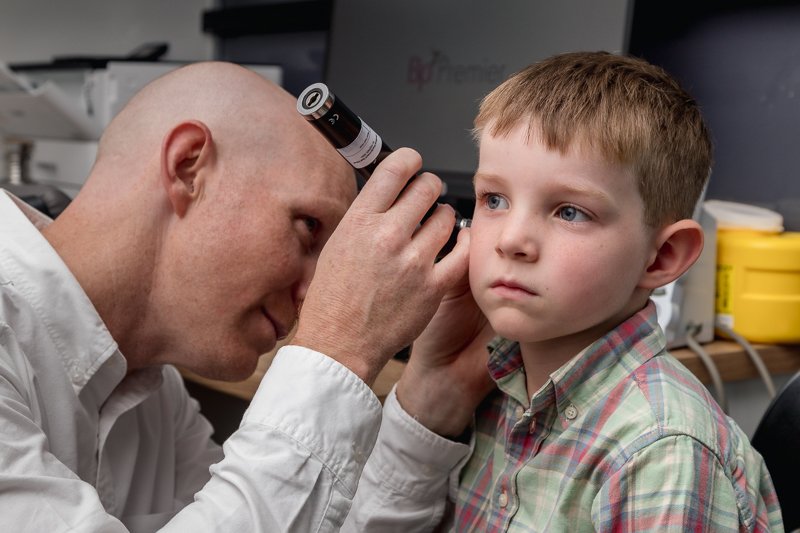Diabetes is a serious condition. It is complex and can affect all parts of the body, requiring ongoing management. It is a chronic condition where your body struggles to convert food into energy properly. The food that we eat is turned into a sugar that our body can use for energy, and this sugar is called glucose. Glucose is stored in our blood, and our body uses a hormone from our pancreas to turn it into energy. This hormone is called insulin, and it regulates how much glucose is in the bloodstream.
In people with diabetes, the body struggles to produce and use enough insulin to turn glucose into energy and reduce its levels in our blood. When these people eat foods high in sugar, such as fruit, sweets or bread, they can’t turn the sugar into energy efficiently and end up with harmful levels of glucose in their bloodstream.
The name for your blood glucose level is ‘glycaemia’. Low blood sugar is called hypoglycaemia and high blood sugar is called hyperglycaemia. Many people confuse these terms, but it can help to think of ‘hypo’ meaning low, and ‘hyper’ meaning fast, or high. Both hypoglycaemia and hyperglycaemia have different symptoms and both can be dangerous.
There are multiple different types of diabetes, and anybody can develop it throughout their life. According to the ABS, 1 in 20 Australians have diabetes, increasing to 1 in 5 Australians aged 75 and over. In fact, Australians are diagnosed with diabetes every 5 minutes, equalling 280 new diagnoses a day.
The types of diabetes
There are three types of diabetes. These are:
● Type 1
● Type 2
● Gestational diabetes
Type 1 Diabetes
Type 1 diabetes occurs when the immune system attacks cells in the pancreas that produce insulin. When these cells are destroyed, they can no longer produce enough insulin to maintain a healthy blood glucose level.
The symptoms of type 1 diabetes are:
- Excessive thirst and hunger
- Frequent urination
- Unexplained weight loss
- Fatigue
- Blurred vision
- Mood swings
- Headaches
- Dizziness
These symptoms can occur rapidly, and if any of these symptoms are new or unusual it is best to see your GP.
If a person with diabetes has a blood sugar level that becomes dangerously low or high, it can cause a life threatening medical emergency. If someone with diabetes is losing consciousness or is confused, then call an ambulance on 000.
Causes and risk factors
Type 1 diabetes is considered an autoimmune condition, because immune cells attack the healthy pancreatic cells. A healthy lifestyle can’t prevent or cure type 1 diabetes, and an exact cause is not known. There is a genetic risk factor for diabetes, meaning that someone is more likely to develop it if one of their relatives also has the condition.
Management
Type 1 Diabetes is serious, but manageable. Following a healthy diet and exercising regularly can help, but they cannot cure the symptoms of diabetes. However, Insulin injections or an insulin pump can replace the insulin that the body can no longer produce naturally. Monitoring blood glucose levels regularly also helps to ensure they are within safe levels. A doctor will be able to help somebody with diabetes to identify the safe range for their blood glucose levels, and then keep their levels in that range.
Type 2 Diabetes
Type 2 diabetes occurs when a person’s body stops producing enough insulin, or cannot use insulin effectively in the body. Cells in the body can develop insulin resistance, where they stop responding to insulin even when it is produced. This is the most common type of diabetes and occurs in 85-90% of all cases of diabetes.
There is no exact cause pinpointed, and type 2 diabetes tends to get progressively worse over time. However, people with type 2 diabetes may be able to slow down or stop the effects of type 2 diabetes through lifestyle modifications including a healthy diet and increased exercise.
People with unusually high blood sugar levels may be called ‘pre-diabetic’, and it means that they are at risk of developing type 2 diabetes.
Initially, the symptoms of type 2 diabetes might be missed until they cause a complication. Symptoms are likely to be similar to type 1 diabetes, including:
- Excessive thirst and hunger
- Frequent urination
- Fatigue
- Poor wound healing
Further symptoms may be experienced as a result of complications caused by type 2 diabetes.
Causes and Risk Factors
While there is no known direct cause of type 2 diabetes, there are several well documented risk factors that increase a person’s chance of developing the condition. These include:
- Genetic factors, such as a family history of diabetes
- An unhealthy diet and lifestyle
- Having Polycystic Ovarian Syndrome (PCOS)
- Being overweight
- Being aged 55 or over
- Ethnicity
The Australian Government has developed a Risk Checker to determine if you are at increased risk of type 2 diabetes - you can access it here.
Management:
There is a heavy emphasis on lifestyle factors when managing type 2 diabetes, such as maintaining an active lifestyle, losing weight and following a healthy, low sugar diet. Ideally, these changes will successfully manage the condition.However, there is also a wide range of medication which may be helpful if it is required. If type 2 diabetes progresses, insulin may be needed.
Gestational Diabetes
Gestational diabetes occurs in pregnant women, and usually resolves after the baby is born. Routine testing is done to check for gestational diabetes and make sure that it is managed if it occurs. It is generally found at 24-28 weeks of pregnancy, and can be an upsetting diagnosis. It is the fastest growing type of diabetes in Australia.
Symptoms:
- Feeling thirsty
- Fatigue
- Frequent urination (more than expected during pregnancy)
- Yeast infections
- Nausea
- Blurred vision
- Weight loss
Causes and Risk Factors
Gestational diabetes occurs when pregnant women experience high blood glucose levels for the first time during pregnancy, due to hormones from the baby’s placenta causing insulin resistance in the mother. When a baby grows bigger, the mother’s body needs to produce a lot of insulin to keep her blood glucose level healthy, and in some people their body can’t meet this demand. Risk factors include:
- Being aged 40 or over
- Genetic factors, such as a family history of diabetes
- History of gestational diabetes in previous pregnancies
- Having Polycystic Ovarian Syndrome
- Ethnicity
- History of giving birth to a large baby over 4.5 kilos
- Weight
- History of high blood glucose levels
Management:
Healthy eating and regular exercise may be enough to manage gestational diabetes, but in some cases insulin injections or other medications may be required to help maintain healthy blood glucose levels.
How can Peregian Family Medical Centre help?
At Peregian Family Medical Centre, we understand the risk factors for developing diabetes, as well as the varying types and management required for each.
If you believe that you have symptoms of diabetes, or that you may be at risk of developing it, come in to see one of our friendly GPs. We will provide professional, empathetic care and help you to manage your condition and make any lifestyle changes that you need in order to live well.
Disclaimer
All information is general in nature. Patients should consider their own personal circumstances and seek a second opinion.






